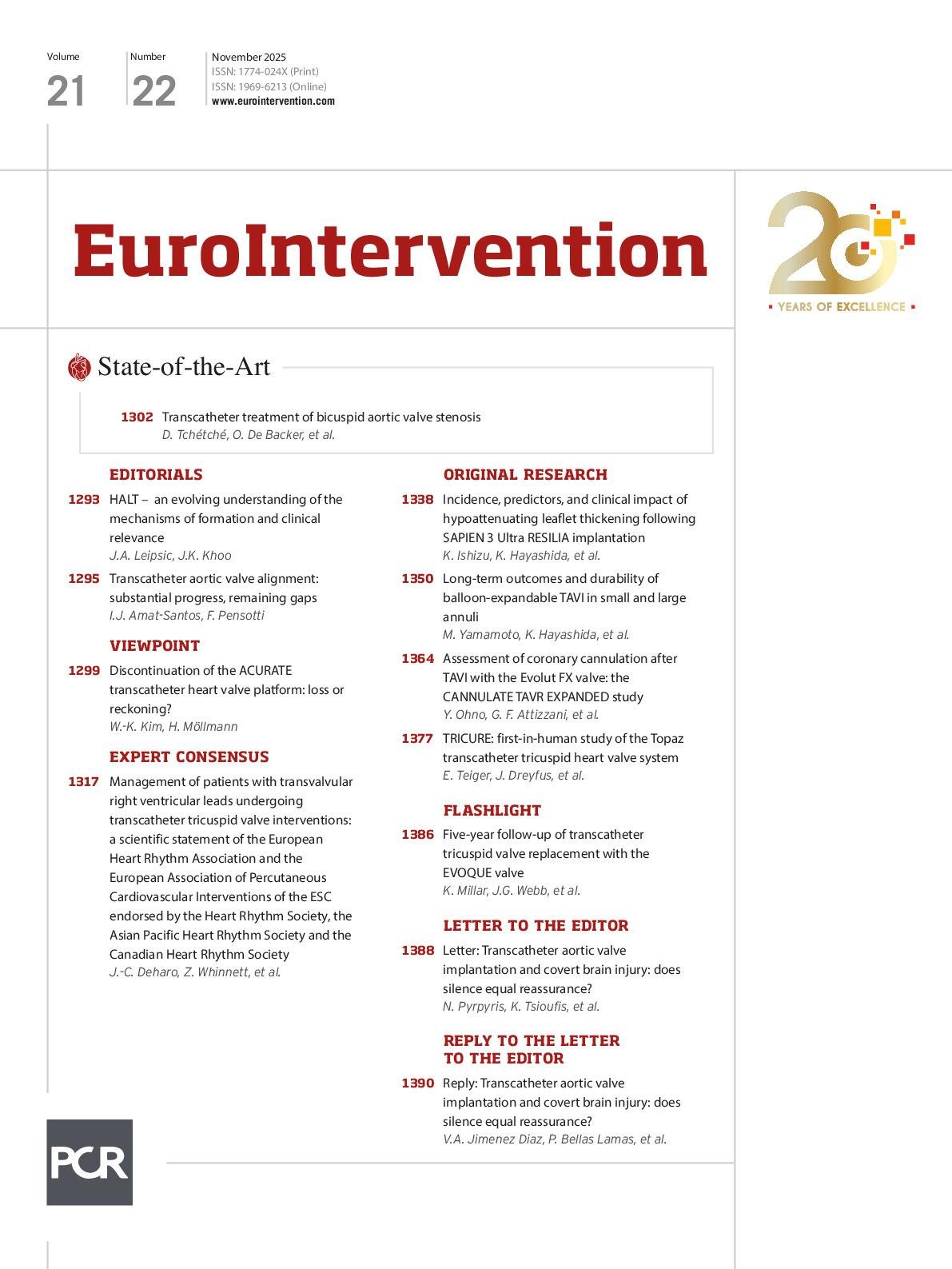We are performing transcatheter aortic valve implantation (TAVI) procedures better than ever. Technical advancements and operator expertise have led to improved outcomes, and this, combined with growing evidence supporting TAVI durability, has accelerated its adoption in younger patients with longer life expectancy. But this progress comes with a caveat: longer post-TAVI survival means an increasing need for coronary angiography, percutaneous coronary intervention (PCI), and valve reintervention, all of which depend on reliable coronary cannulation (CC)1. In 2020, Barbanti et al2 reported that selective coronary re-engagement was unsuccessful in 7.7% of patients after TAVI with the Evolut R/PRO valve (Medtronic), identifying implant depth and transcatheter heart valve (THV) oversizing relative to the sinus of Valsalva as predictors of failure. At that time, commissural and coronary alignment were rarely a concern during implantation. Subsequent studies recognised that misalignment might be a key driver of difficult CC, sparking device iterations and procedural refinements aimed at improving alignment – and, consequently, coronary access. In this issue of EuroIntervention, the study by Ohno et al3 confirms that these efforts are bearing fruit....
Sign up for free!
Join us for free and access thousands of articles from EuroIntervention, as well as presentations, videos, cases from PCRonline.com

